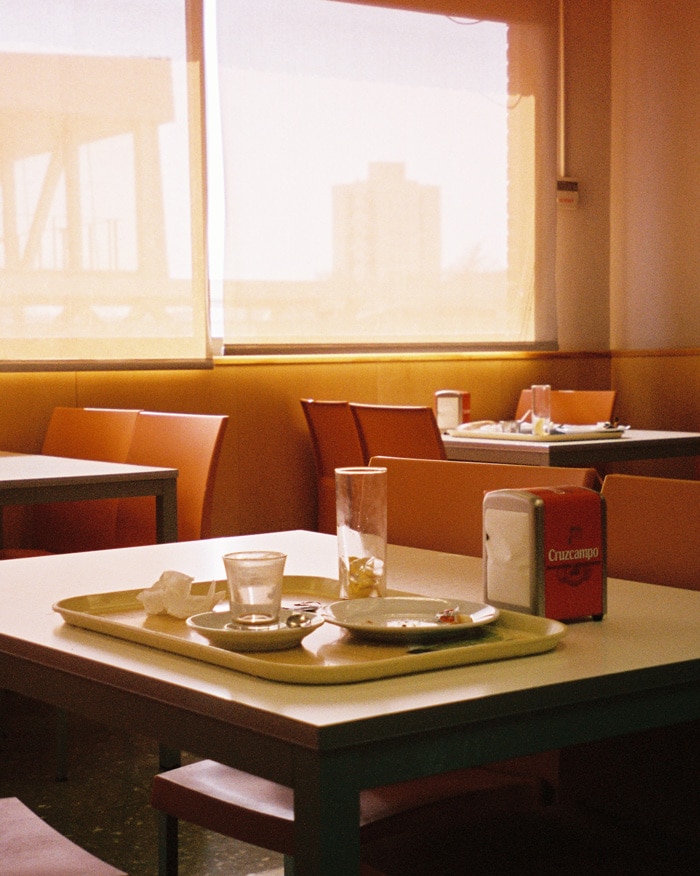
Opinion
What are ghost kitchens and will they make the future of dining look eerie?
By Emma O'Regan-Reidy
Opinion
What are ghost kitchens and will they make the future of dining look eerie?
By Emma O'Regan-Reidy
Published Jul 30, 2020 at 07:00 AM
Reading time: 3 minutes
Food
Jul 30, 2020
It’s Saturday evening, you’re hanging (badly) and you’re thumbing (aimlessly) through Delieveroo looking for a savoury treat to restore your sense of wellbeing temporarily. Maybe it’s a bit more like Saturday at 2 p.m., but we’ll say it’s evening so you won’t feel as bad about ordering a takeaway that early in the day.
Burger Bytes, a restaurant with the slogan “Travel back in time with these burgers, French fries, and onion rings—classics that are sure to satisfy your hunger, and your appetite for simpler times!” catches your attention for its ratio of simplicity, fried food with a fizzy drink selection. The location indicates it’s in Thames Circle Parking Lot, East London, but what if I told you that Burger Bytes’s logo and menu existed solely beneath your fingertips on your phone screen, rather than at its physical location? Burger Bytes, with its chirpy, pun-filled, internet-influenced name, isn’t a traditional restaurant; it’s a ghost kitchen—one of many. But what are ghost kitchens and how will the new phenomenon affect the future of dining?
Ghost kitchens are defined as cooking facilities with no sit-in eating area, in other words, a facility set up to prepare delivery-only meals. Though this slow but steady trend has been growing only since 2017, according to Micheal Schaefer, Euromonitor’s global food and beverage lead, ghost kitchens are predicted to globally create a £797 billion market by 2030.
According to Technomic, in the first two quarters of 2018, third-party delivery service sales such as Delieveroo came to a total of £3.9 billion, jumping up 55 per cent from 2017. As fast-casual dining and delivery services have skyrocketed exponentially in recent years, more and more brick and mortar restaurants have been extending their services to third-party apps such as GrubHub in the US or Deliveroo in the UK.
Citing data from The Financial Times, 60 per cent of the price of a Starbucks latte is designed to cover rent and staff costs. Delivery-only restaurants, therefore, could result in a cheaper dining experience for provider and customer. Compared to a traditional restaurant, ghost kitchens minimise start-up cost and risk. Digital restaurants that exist solely online can easily mutate to fit customer reception of its menu items, or even change its brand entirely overnight.
Without interior design to consider, these ghost kitchens are menu and delivery-orientated. When Uber Eats and Deliveroo first launched virtual restaurants in 2017, they took into consideration which food categories would work best in certain neighbourhoods dependent on surrounding demographics. These data analytics ensured popularity and profitability, creating kitchens from and to follow algorithms.
According to Forbes, about 26 per cent of all restaurants fail in their first year. While ghost kitchens do appear to be an easy way into the restaurant industry for an entrepreneur, it should be noted that not only independent establishments or individuals have been engaging with this new business model.
Large entertainment and food conglomerates such as Chuck E. Cheese in the US or McDonald’s in the UK have launched virtual restaurants of their own, competing with smaller start-ups such as Burger Bytes. In October 2019, for instance, McDonald’s opened its first ‘dark’ kitchen in London’s Hanworth neighbourhood. A McDonald’s spokesman told Property Week that the move was “part of a wider trial to test different restaurant formats.” Property Week also noted that Travis Kalanick, CEO of Uber, purchased 100 ghost kitchen spaces in March 2019, intending to rent them out to fast food companies. While it was unclear whether this Hanworth McDonald’s location was acquired from Kalanick, an implicit connection between these different aspects of the gig economy can be made.
While cost and risk are mitigated by ghost kitchens, many are critical of trading physical architecture for digital establishments. One restauranteur interviewed for a piece on the phenomenon by The New Yorker stated that while he had thought about using third-party delivery apps in the past, the charges were too high to consider. He added, “People in restaurants work so hard, and margins are so slim. It’s an implicit class thing: blue-collar workers, but the margins are going to software developers and venture companies.” Here, the restaurant owner identifies a growing trend not only in the dining industry, but across all sectors in which tech and algorithms dominate, earning substantial profit margins off the backs of existing restaurants.
Lockdown measures imposed by governments due to COVID-19 have resulted in most restaurants in the UK becoming ‘ghost kitchens’ unexpectedly. Even as dining rooms across the UK slowly reopen, many in the past few months have been forced to expand their services online. As lockdown measures lessen, restaurants who succeeded in this unexpected shift will already be equipped with the means to continue their online dining services and brand, which in some cases may differ from their brick and mortar menus.
In the coming months, Burger Bytes might metamorphose into a fish and chips or street taco kitchen, but the ghost kitchen tucked away in East London will most likely remain. As restaurants hesitantly reopen, it will be interesting to see how they compete with delivery-only ghost kitchens in a (hopefully) post-COVID marketplace.




